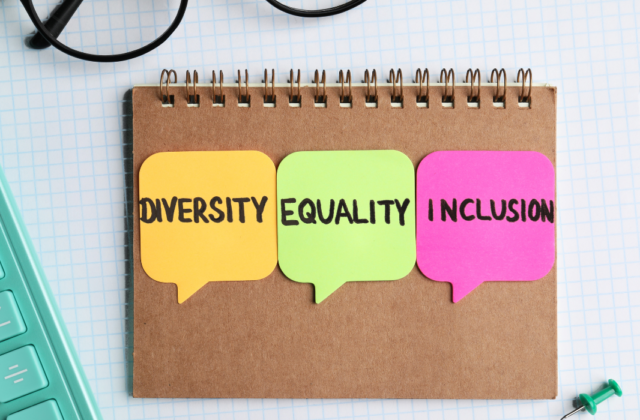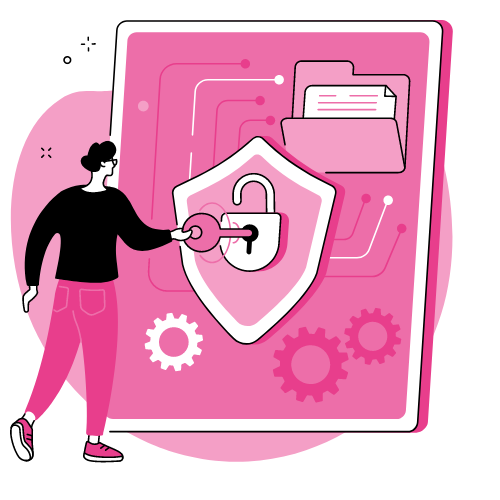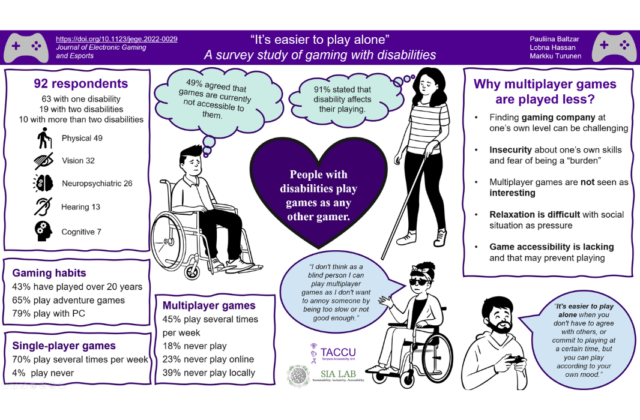Accessibility In Digital Learning Games – Why Is It Relevant?
Accessibility In Digital Learning Games – Why Is It Relevant?
Many companies are discussing ESG (Environmental, social and corporate governance) and how to implement it. As a part of ESG, inclusion, diversity, and accessibility should be implemented. Taking accessibility into account can lead to better business decisions, better results, and new markets, likewise, accessibility is the right thing to do to promote equality.

Globally, over one billion people have a disability, and the number of disabled people is dramatically increasing due to congenital reasons, aging, wars, and natural disasters amongst many reasons. One in six people has some sort of disability, so in a typical learning situation, there will be at least a few people with disabilities. Furthermore, there are over three billion gamers in the world and at least a third of those gamers experience a disability that affects their use of games. This estimate of disabled gamers could be higher depending on how disability is defined and what kind of games we’re talking about. In the context of learning games, the amount is actually much higher.
Typical entertainment games can be made accessible commonly in two ways: either by making a mainstream game with a variety of accessibility options (e.g., subtitles, audio cues, and adjustable game speed) or by making a game that’s purposely designed for people with disabilities, such as audio games. The first option especially is used by all players, not only disabled ones. For example, nearly all of us have turned on the subtitles in games. People with disabilities want to play with others and share experiences as any other gamer. So there’s no idea to exclude people with disabilities from the mainstream, or actually, from any games.
This same applies to learning games. Learning games can have different accessibility options, they can be overall designed with accessibility in mind, or there can be separate games for people with disabilities. The best option would again be to make games playable for as many people as possible, and not to design disability-specific games.
Overall, accessibility and game accessibility are about making learning games playable for diverse groups.
Generally, if you ask current gamers if they’re going to stop playing when they grow older, practically no one claims they are. So we have an aging population of gamers, which indicates that in the future, we’ll have even more people with disabilities playing than we have now. The same applies to learning games. More and more games are used in education in all parts of life, regardless of age, in schools, and corporate training. So, if you solve accessibility-related issues now, you also benefit your future self, great right?
Game accessibility benefits all of us, regardless of our abilities.

Why is accessibility important?
It seems that people with disabilities want to play games, as any other gamer, however, 49% have agreed that games are not currently accessible for them (you can read more from readings 3). Most likely around the same numbers could apply to learning games. I don’t see a reason why people with disabilities would not want to use games for learning, as any other learner. Do you?
Accessibility is after all about making the world more equal, why would we want to exclude people? This should also be the case for any game developer, content creator, or teacher, why would you want to exclude people from your game and learning? Don’t you want anyone who wants to learn with games to offer the possibility to do that?
Other than providing equality and inclusion, accessibility is also great business-wise. Like said, there are at least 1 billion gamers with disabilities in the world, and the number could be much higher when taking learning games into account. There’s a huge need in the market for accessible games and accessible learning via gaming, which hasn’t been addressed yet.
To sum up, accessibility aims to provide everyone with an equal chance to learn.
Accessibility in current games
There have been clear improvements in game accessibility during the past few years. Games offer more accessibility settings, and they’re designed from the beginning with multiple modalities and overall different aspects in mind. However, some games are still missing even the most basic settings, such as the possibility to change contrast, remap controller buttons, or turn on subtitles. In addition, for many games, there aren’t enough language options. For example, Finnish gamers with disabilities report that gaming would be easier for them if they could use their own language. Further, multiplayer games have many problems to tackle starting from accessible communication methods, allowing using multiple modalities, and creating servers for people with disabilities if needed.
Accessibility is nowadays more visible, but more is needed!
Tips – How to make your games more accessible
Now you know that accessibility is important if you want to attract as many learners as possible and if you want to make our society more inclusive! Here are a few concrete tips you can start with:
- Talk to people with disabilities
- It’s important to learn to understand the needs and desires of people with disabilities better.
- Test your learning games with people with disabilities
-
- Every disability is different, as every person is different, so real experiences really matter. Your game might be perfectly working for some with a visual disability, and for some not at all
- Deliver all information and instructions with multiple modalities (text and audio)
- This allows the learners to choose the modality which is the most suitable for their needs
- Use clear language
- Clear language helps everybody to understand better
- Allow multiplayer modes
- This supports social playing and also offers learners options on how to interact with the game: e.g., only one can interact with the platform if it’s difficult for others
- Allow submitting the exercises in multiple ways (text, image, video, and audio)
- This allows the learners again to choose the best way to learn.
- Provide assessment guidelines
- Learners will know what they should focus on.
- Use Seppo.io’s existing tips!
- Make video and audio accessible: https://seppo.io/manual/creating-a-new-game/accessibility/creating-alt-texts-for-pictures-videos-and-audio/
- Create accessible content: https://seppo.io/manual/creating-a-new-game/accessibility/creating-accessible-content/
 As a last note, it’s really important to remember that all people are different. Some tasks are easy for some people and for some, they’re nearly impossible. The most important thing is that you try your best, it‘s really difficult (if not impossible) to make every single thing fully accessible for everyone since we have different needs.
As a last note, it’s really important to remember that all people are different. Some tasks are easy for some people and for some, they’re nearly impossible. The most important thing is that you try your best, it‘s really difficult (if not impossible) to make every single thing fully accessible for everyone since we have different needs.
So educate yourself, and try your best, let’s take a step towards more accessible learning!
Writer
Pauliina Baltzar is Doctoral Researcher at Tampere University and LUT University. Her research focuses on social accessibility in multiplayer games, in other words, she is interested in how people with disabilities play with others and the social aspects related to gaming sessions.
TACCU. She is coordinating TACCU, Tampere Accessibility Unit.
SIA Lab. She is the accessibility research lead in SIA Lab.
Background
I started working with accessibility more closely a few years ago, first as coordinating TACCU Tampere Accessibility Unit and in 2021 I started my dissertation focusing on social accessibility in multiplayer games. Playing with others has been a huge part of my life, so I felt that people with disabilities should have an equal chance of playing with others and sharing these amazing experiences of social playing. When I started my dissertation, I was not sure how many people with disabilities actually play multiplayer games, but I was confident that people do want to play them and that there are already people who play them.
References:
Disability charity Scope UK. (n.d.). Scope. Accessibility in gaming report. Retrieved September 3, 2022, from https://www.scope.org.uk/campaigns/research-policy/accessibility-in-gaming
Moss, R. (2014, August 6). Why game accessibility matters. Polygon. https://www.polygon.com/features/2014/8/6/5886035/disabled-gamers-accessibility
World Health Organization. 2023. Disability and Health https://www.who.int/news-room/fact-sheets/detail/disability-and-health
Further readings:
- Hassan, L., & Baltzar, P. (2022). Social aspects in game accessibility research: a literature review. In DiGRA’22–Proceedings of the 2022 DiGRA International Conference: Bringing Worlds Together. DiGRA online library.
- Baltzar, P., Turunen, M., & Hassan, L. (2022, November). Popular Accessibility Settings in Digital Games: What accessibility settings do players with disabilities use and need?. In Proceedings of the 25th International Academic Mindtrek Conference (pp. 359-363). https://doi.org/10.1145/3569219.3569335
- Baltzar, P., Hassan, L, & Turunen, M. (2023). “It’s easier to play alone”- A survey study of gaming with disabilities. Journal of Electronic Gaming and Esports https://doi.org/10.1123/jege.2022-0029
- Baltzar, P., Hassan L. & Turunen, M. (Forthcoming 2023) Assistive Technology in Gaming: A Survey of Gamers With Disabilities. In Proceedings of the 7th International GamiFIN Conference 2023.